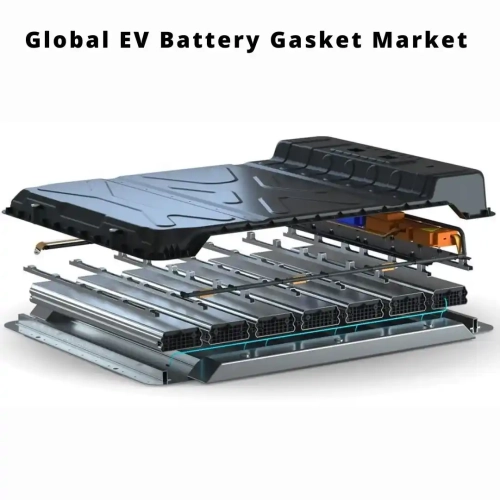
- Get in Touch with Us

Last Updated: Apr 25, 2025 | Study Period: 2024-2030
A battery seal is a safety device that completely encloses a battery to stop electrolyte leakage. Radial crimping pressure or impact are used to seal the plastic gasket to the cell. Due to their significantly higher energy density as compared to weight, lithium-ion and lithium-polymer batteries are typically seen in modern electric vehicles. Lithium, manganese, cobalt, graphite, steel, and nickel are the main chemical components needed in lithium-ion batteries.
The space between two surfaces is sealed with a gasket, commonly referred to as an O-ring or washer. These objects often come in a variety of sizes and forms based on their intended use and are manufactured of rubber. The flat gasket is the most typical kind of gasket. A mechanical gasket prevents leakage from or into the attached components while they are compressed by filling the area between two or more mating surfaces.
Lithium cobalt oxide (LCO), lithium manganese oxide (LMO), lithium iron phosphate (LFP), lithium nickel cobalt aluminium oxide (NCA), and lithium nickel manganese cobalt oxide are the most widely utilised kinds (NMC). Lithium-ion batteries currently use graphite on a large scale as the anode.
Corrosion and UV protection: One of the key factors in why so many businesses use the E-coat process for industrial applications is its exceptional corrosion resistance. But as the majority of e-coats are not UV stable, they are typically primarily utilised as primers or finishes.

The Global EV Battery Gasket market accounted for $XX Billion in 2023 and is anticipated to reach $XX Billion by 2030, registering a CAGR of XX% from 2024 to 2030.
Gaskets for electric vehicle batteries offer thermal insulation and environmental sealing. They might also offer electromagnetic interference shielding and fire protection (EMI). Gaskets for EV batteries are made of rubbers, or elastomers, which add particular qualities, including chemical resistance. These elastomeric gaskets cover the spaces between machined metal surfaces because rubber is compressible. You may get the EV battery gaskets at Elasto Proxy.
Metal that is both light and resistant to corrosion. They are exposed to corrosive chemicals, extreme heat, and physical pressures and have a significant sealing area. As a result, silicone foam or polyurethane foam is used to make the majority of EV battery cover gaskets. In order to fill surface discontinuities, they have hollow parts that fit with metal cover plates.
Although they can also allow for some movement within the application, EV battery cover gaskets are made to close these gaps. This is significant because metal expands when heated by the battery and contracts when cooled. Cracking may happen if a gasketing material is inflexible and hard rather than soft and compressible.

EV BATTERY GASKET MARKET COMPANY PROFILE
| Sl no | Topic |
| 1 | Market Segmentation |
| 2 | Scope of the report |
| 3 | Abbreviations |
| 4 | Research Methodology |
| 5 | Executive Summary |
| 6 | Introduction |
| 7 | Insights from Industry stakeholders |
| 8 | Cost breakdown of Product by sub-components and average profit margin |
| 9 | Disruptive innovation in the Industry |
| 10 | Technology trends in the Industry |
| 11 | Consumer trends in the industry |
| 12 | Recent Production Milestones |
| 13 | Component Manufacturing in US, EU and China |
| 14 | COVID-19 impact on overall market |
| 15 | COVID-19 impact on Production of components |
| 16 | COVID-19 impact on Point of sale |
| 17 | Market Segmentation, Dynamics and Forecast by Geography, 2023-2030 |
| 18 | Market Segmentation, Dynamics and Forecast by Product Type, 2023-2030 |
| 19 | Market Segmentation, Dynamics and Forecast by Application, 2023-2030 |
| 20 | Market Segmentation, Dynamics and Forecast by End use, 2023-2030 |
| 21 | Product installation rate by OEM, 2023 |
| 22 | Incline/Decline in Average B-2-B selling price in past 5 years |
| 23 | Competition from substitute products |
| 24 | Gross margin and average profitability of suppliers |
| 25 | New product development in past 12 months |
| 26 | M&A in past 12 months |
| 27 | Growth strategy of leading players |
| 28 | Market share of vendors, 2023 |
| 29 | Company Profiles |
| 30 | Unmet needs and opportunity for new suppliers |
| 31 | Conclusion |
| 32 | Appendix |